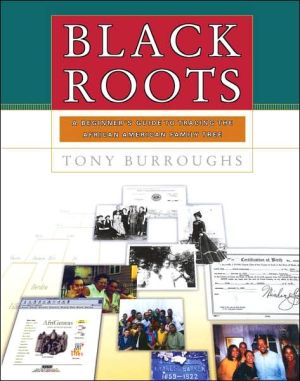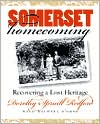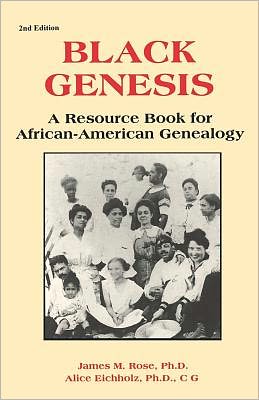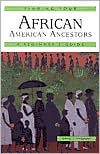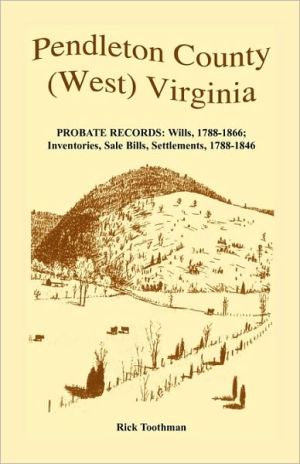Black Roots: A Beginners Guide To Tracing The African American Family Tree
Trace, document, record, and write your family's history with this easy-to-read, step-by-step authoritative guide.\ Finally, here is the fun, easy-to-use guide that African Americans have been waiting for since Alex Haley published Roots more than twenty-five years ago. Written by the leading African American professional genealogist in the United States who teaches and lectures widely, Black Roots highlights some of the special problems, solutions, and sources unique to African Americans....
Search in google:
Trace, document, record, and write your family's history with this easy-to-read, step-by-step authoritative guide.Finally, here is the fun, easy-to-use guide that African Americans have been waiting for since Alex Haley published Roots more than twenty-five years ago. Written by the leading African American professional genealogist in the United States who teaches and lectures widely, Black Roots highlights some of the special problems, solutions, and sources unique to African Americans. Based on solid genealogical principles and designed for those who have little or no experience researching their family's past, but valuable to any genealogist, this book explains everything you need to get started, including: where to search close to home, where to write for records, how to make the best use of libraries and the Internet, and how to organize research, analyze historical documents, and write the family history.THIS GUIDE ALSO INCLUDES: real case histories that illustrate the unique challenges posed to African Americans and how they were solved more than 100 illustrations and photographs of actual documents and records you're likely to encounter when tracing your family tree samples of all the worksheets and forms you'll need to keep your research in order a list of the traps even experienced researchers often fall into that hamper their researchBlack Issues Book ReviewThis easy-to-use, easy-to-read guide simplifies a seemingly mammoth task into accomplishable baby steps. Down to the AA batteries for the tape recorder, Burroughs helps the reader prepare, organize and start the process of recording his or her family history.
from Part I: Fundamentals: The Building Blocks of African American Genealogy\ Beginning a new venture can be either fun or frustrating. In any sport, game, hobby, or endeavor, you do not have to read a book, take a class, or have a tutor to learn a new skill. The old method of trial and error still works. This is true in genealogy as well as other disciplines. So I would never be one to say there is only one way to do genealogy and if you don't do it that way you won't be successful. But to me, trial and error can be very frustrating.\ Experience has shown that if you learn the fundamentals in a new area and follow them, you will likely become more successful and at a faster pace. You can benefit from my mistakes and those of other genealogists. Of course, if you only believed in the trial-and-error method, you probably wouldn't be reading this book.\ Through solving major problems of my own, pondering the problems of others, and studying genealogy and African American history, I have developed six distinct phases of African American genealogy. If you understand and master each phase before proceeding to the next one, I believe you will be very successful.\ Remember that fundamental genealogy starts from the known and proceeds to the unknown, one generation at a time. You may have the name of an old ancestor, perhaps a great-great-grandparent who was a slave. You may or may not know much about this ancestor. If you haven't completed the stages that lead back to this ancestor, you are not prepared to research that ancestor. You will not have enough information to be successful. If you thoroughly cover these phases and steps, you will pick up information along the way that will be essential in researching this ancestor. You will then be in a much better position to research that ancestor when you get your research back that far.\ The Six Phases of African American Genealogy \ \ Gather Oral History and Family Records\ Research the Family to 1870\ Identify the Last Slave Owner\ Research the Slave Owner and Slavery\ Go Back to Africa\ Research Canada and the Caribbean\ \ \ Phase I — Gather Oral History and Family Records\ We've said genealogy starts with ourselves and proceeds backward. You are the first link in your family tree. So genealogy begins with recalling and recording things about yourself and beginning to write your autobiography. Next you'll need to interview your parents and other older relatives, pumping them for information. You'll then look at things lying around the house in trunks, attics, basements, bookcases, and shoe boxes that can add to knowledge of your family tree. Things like family papers, records, photos, and souvenirs. To sort out all this data, you'll organize it into genealogy charts that trace bloodlines and group people in family units. All these things are parts of beginning genealogy.\ Phase II — Research the Family to 1870\ After you exhaust sources at home, you'll venture out to locate records in the community. The objective is to research your family back to 1870. This is a key date because most African Americans were enslaved prior to the Civil War. But not all African Americans were enslaved before the Civil War. There were more than 200,000 free Blacks in the North and another 200,000 free in the South prior to the Civil War. Unfortunately, many genealogists assume their ancestors were slaves and run into a brick wall because their ancestors were actually free prior to the Emancipation Proclamation.\ Additional beginning sources include records in cemeteries and funeral homes, birth and death certificates, marriage and divorce records, obituaries, published biographies and family histories, old city directories and telephone directories, Social Security records, and U.S. Census records.\ Intermediate sources include records of wills, probates, estates, real estate, taxes, voter registrations, schools, churches, places of employment, military service, and civil and criminal courts. The intermediate phase also includes studying U.S. history, African American history, local history, and military history.\ Phase III — Identify the Last Slave Owner\ Once researchers have thoroughly completed the above records and traced their pedigree to 1870, they've arrived at the advanced stage of research. Unfortunately, many more people think they are there before they actually are. Just because you have identified an ancestor who lived in 1870 or earlier does not mean you have qualified for the advanced stage. Only after you have thoroughly exhausted the records and historical research listed above have you progressed to the advanced stage.\ Once here, if your ancestors were enslaved, you have to identify the name of the last slave owner. This may sound unusual because we've all been led to believe our surnames came from the slave owner. But remember, genealogy is based on fact, not assumptions and rumor. Most African Americans are not as fortunate as Alex Haley to have the name of the slave owner passed down from generation to generation. They will have to look to specific sources to identify who was the last slave owner prior to emancipation. Even if the name of the slave owner has been passed down through the oral history of your family, you'll need to search for documentary evidence to verify it. Slave genealogy cannot be done without the name of the former slave owner.\ You'll need to study the history of Reconstruction and then research Reconstruction-era sources for evidence of your ancestors and records that identify the name of the last slave owner. You'll also need to study Civil War history and records generated by the Civil War.\ Phase IV — Research the Slave Owner and Slavery\ Once the name of the last slave owner is identified, the next step is to research the history of slavery and understand the conditions, laws, customs, and practices that governed slavery and enslaved Africans. This subject is not taught in detail in school, so you must study it. Then you need to research the slave owner to see what he did with his property, because slaves were property — bought, sold, and traded like hogs, cattle, and tools. At this point you are doing the genealogy of the slave owner as well as the genealogy of the slave. It's double work.\ Phase V — Go Back to Africa\ The next phase is to look for clues and mentions of slave origins in Africa. Again, you will have to look for bits and pieces of evidence. You cannot rely on family rumors or facial features that have been altered through several generations and many years of evolution and intermixing with other races. Many people of African descent have been here for over three hundred years. You'll need to study the slave trade and the Middle Passage, which brought slaves from Africa to America.\ Phase VI — Research Canada and the Caribbean\ Some of you will discover your ancestors did not come to America directly from Africa; they came from the Caribbean. So you'll need to study the migrations of enslaved Africans from Africa to the Caribbean to America. You'll then search for records indicating origins in the Caribbean and then from Africa to the Caribbean.\ You may discover your ancestors came to the United States from Canada. You'll have to study the Underground Railroad and trace your ancestors back and forth across the border and then to Africa or the Caribbean. But you must study the history before searching for your ancestors.\ This book covers in detail only the beginning steps of genealogical research, Phase I and half of Phase II. To be most successful, these steps, or fundamentals, should be followed in sequence. I know some of you may already have done one or two of the items on this list. For example, some of you may already have talked to older relatives. You may already know three, four, or five generations of your family history from family discussions or from attending family reunions. That is good because you will need that information. You have a head start. Some of you may even have been to the National Archives to research census records but not completed earlier steps, such as obtaining birth and death certificates. Even though you have a head start on some research, you should use these fundamentals. You should read each chapter in detail because it will probably mention things you have not done, things you didn't fully understand, or things you never even thought about. You will probably need to go back to one of your earlier sources to obtain additional information.\ When researchers get stuck researching an ancestor, it is often the result of skipping over fundamental steps. Others might not have been thorough in completing various steps. The process is very similar to spring training in professional baseball. Players learn the fundamentals and practice executing them perfectly, over and over again. No matter how experienced a ball player is, every spring he reports to camp and repeats the fundamentals.\ Copyright © 2001 by Tony Burroughs
Preface: Why a Need for This Book Introduction Part I: Preparing to Research What is Genealogy?Why Research Genealogy? Fundamentals: The Building Blocks of African American Genealogy Organizing Before it Gets Messy Preserving the Past and the Present Managing Your Research Part II: Beginning Steps Oral History-The Most Important Thing You Can Do The Family Archives-Researching Family Records Family Group Sheets The Pedigree Chart Records in Cemeteries Records in Funeral Homes Vital Records Going to the Library Social Security Records U.S. Census Records Part III: Stepping into the Future Electronic Genealogy: Computers and the Internet Writing the Family History I Can't Stop Now: Continuing the Search Putting It All Together APPENDIXES Glossary Acronyms Biography of Robert Elliott Burroughs Traps Directory of Sources Bibliography Index
\ Black Issues Book ReviewThis easy-to-use, easy-to-read guide simplifies a seemingly mammoth task into accomplishable baby steps. Down to the AA batteries for the tape recorder, Burroughs helps the reader prepare, organize and start the process of recording his or her family history.\ \
